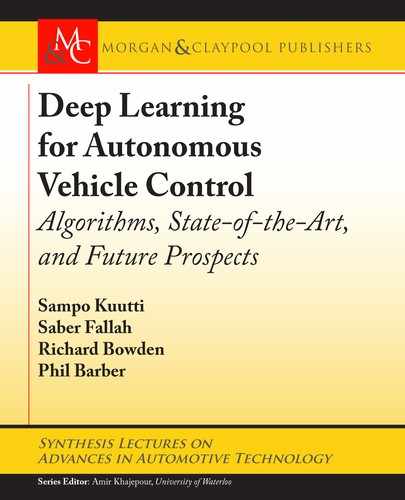
31
C H A P T E R 4
Safety Validation of Neural
Networks
e safety-critical nature of autonomous vehicles means that safety is a critical objective in the
design of the system and must be ensured to a high assurance level. In typical automotive ap-
plications this is done through functional safety validation, where the system is proven to be
safe to a certifiable level, following the guidelines of a standard such as ISO 26262 [161]. e
lack of adequate functional safety validation techniques which can ensure safety to a certifi-
able level is currently a significant obstacle for the implementation of deep learning systems
in autonomous vehicles. Deep neural networks introduce a number of challenges which hinder
the application of traditional verification and validation techniques. First, the opaque nature of
deep neural networks limits their interpretability. With the field moving to more complex and
deeper models, interpreting what the model has learned and how it makes its decisions is no
longer feasible [159]. Second, online learning systems have the capability to self-optimize their
performance by changing their internal structure during operation. is leads to further diffi-
culty for functional safety validation when online learning is utilized, as these systems can no
longer be fully validated offline [162–166]. erefore, methods for run-time validation must also
be considered for adaptive systems. ird, the complex nature of the operational environment
for autonomous vehicles means that it is impossible to test the system for all possible eventuali-
ties [140, 141]. erefore, the validation process must provide proof that the system has learned
rules which ensure safe behavior is maintained even in previously unseen scenarios. Finally, deep
neural networks introduce new vulnerabilities, such as malicious inputs through adversarial ex-
amples. Adversarial examples add small perturbations to images, which cause DNNs to misclas-
sify them with high confidence [167–171]. ese factors make the functional safety validation
of deep learning systems significantly more difficult when compared to traditional software sys-
tems. New functional safety validation approaches must be found, or existing methods adapted,
to move the field toward an adequate safety validation process for deep learning systems. For
these reasons, this chapter is dedicated to reviewing a variety of safety validation approaches and
analyzing their applicability to deep learning-based systems for autonomous vehicles.
..................Content has been hidden....................
You can't read the all page of ebook, please click here login for view all page.
